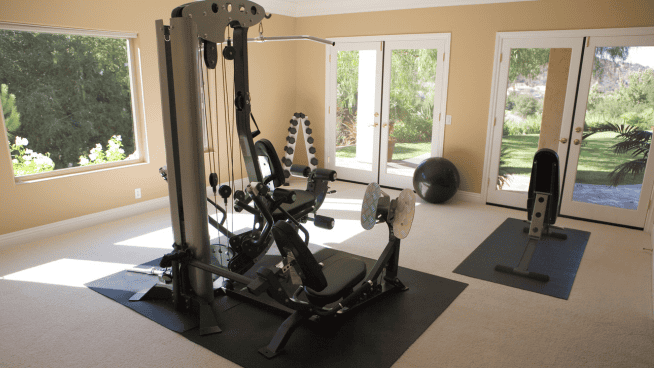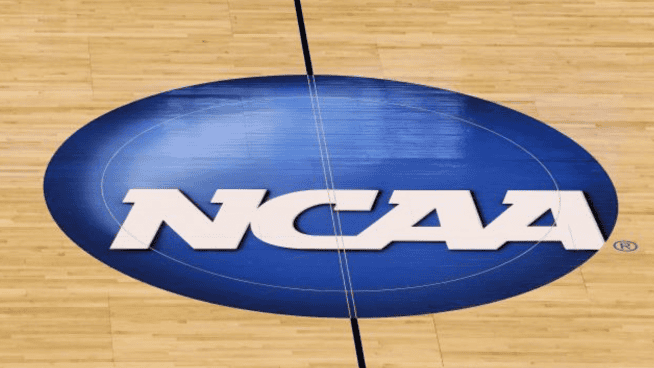![]()
Recently, a parent of one of the athletes I train approached me and kindly implied that our training should be based primarily on sport-specific methods to improve their child’s sports performance. It seems simple and logical enough, I am sure, but there is a great deal missing from this approach
“The Principle of Specificity, often referred to as the SAID Principle, stands for specific adaptation to imposed demands.” So obviously, if you are an athlete playing a sport, you should work on honing and improving the technical aspects of the specific movements associated with your sport to enhance your performance in that sport. I absolutely agree.
RELATED: 5 Unbreakable Exercise Principles That Determine Your Success
However, the problem with using just this oversimplified and obvious training approach is that it automatically deprives the athletes of opportunities to build other skills and attributes necessary for success in any sport—size, strength, quickness, speed and power—which sport-specific training cannot provide.
With that being said, you should always implement “indirect” or non-sport-specific training to complement essential sport-specific movement training to optimize performance. In other words, if you are a volleyball player seeking to improve anterior arm swing velocity on your serves and spikes, it’s in your best interest to use a full spectrum of exercises, not just the repetitive movement, to encourage full expression of the target skill. Otherwise, performance and local and global structural health become eventual concerns for the athlete.
RELATED: Why Position-Specific Training is Crucial for Football Players
Too help illustrate my point, I feel it’s important to introduce or re-visit the “Power Development Model.” In this display, you can practically apply approximately all forms of training, both direct and indirect, to ensure you are maximizing athletic-based movements (sprinting, cutting, braking, jumping, landing, swinging, throwing, etc.) This particular model involves specific speed, strength and power training with corresponding drills for both the upper- and lower-body regions.
The Power Development Model
Upper-Body Speed Training / Upper-Body Strength Training / Upper-Body Power Training
Exercise Examples:
- Med ball work and Plyometric Push-Ups
- Bench Press, Chin-Ups, Pull-Ups, military work
- Speed bench and Olympic lifts
Lower-Body Speed Training / Lower-Body Strength Training / Lower-Body Power Training
Exercise Examples:
- Jumping, sprinting, and cutting
- Squats, Deadlifts, and single-leg work
- Hex Bar Jumps and Olympic lifts
You can see how much work is covered by the exercises listed above. Plus, several other sub-categories and exercise variations can be included as well.
RELATED: The 3 Most Common Weight Room Training Mistakes
Bottom line: Coaches, athletes, trainers and parents need to embrace collective athletic development and start thinking outside the box, and not just rely solely on persistent practice of sport-related movements and hope for a miracle. This is an incomplete approach, which often leads to a reduced motivational state in athletes, along with common underuse and overuse injuries, performance plateaus and extreme frustration, to name a few. I see it nearly every day in my local community. It’s an epidemic that we need to cure nationwide.
Sample Sports Skills and Indirect Training Methods
Below is a short list of athletic skills that I’ve researched and will continue to examine along with “indirect” exercises that have been scientifically proven to benefit performance.
Vertical Jump and Sprinting Speed
Effective Training Techniques: Quickness drills, squatting and deadlifting, antagonistic stretching techniques, Olympic lifting, single leg-strength, sled work, and various plyometric variations.
Club Head Speed
Effective Training Techniques: Jump Squats, heavy medicine ball variations, multi-planar hip and thoracic mobility work, glute and quad strength, and rotator cuff/scap strength.
Braking and Cutting
Effective Training Techniques: Body and plant-foot positioning, linear acceleration levels, inter- and intramuscular coordination levels, maximal lower-body strength, and eccentric lower-body strength.
Too reiterate, using both specific and non-specific training methods is always a good idea, regardless of the type of athlete. We’ve come to partially value this concept in some ways with the heavy recognition and mass promotion of training techniques like foam rolling, static stretching and core training, to name a few; but we are still undermining what else is readily available to athletes with other types of training, ties that are superior to what is currently more popular. Consider the model I provided here, and then assess and identify any weak link that you or your athlete might have—and attack it!
Reference:
Clark, M. Essentials of Personal Fitness Training. Baltimore, MD. Lippincott Williams & Wilkins: 2008.
RECOMMENDED FOR YOU
MOST POPULAR
![]()
Recently, a parent of one of the athletes I train approached me and kindly implied that our training should be based primarily on sport-specific methods to improve their child’s sports performance. It seems simple and logical enough, I am sure, but there is a great deal missing from this approach
“The Principle of Specificity, often referred to as the SAID Principle, stands for specific adaptation to imposed demands.” So obviously, if you are an athlete playing a sport, you should work on honing and improving the technical aspects of the specific movements associated with your sport to enhance your performance in that sport. I absolutely agree.
RELATED: 5 Unbreakable Exercise Principles That Determine Your Success
However, the problem with using just this oversimplified and obvious training approach is that it automatically deprives the athletes of opportunities to build other skills and attributes necessary for success in any sport—size, strength, quickness, speed and power—which sport-specific training cannot provide.
With that being said, you should always implement “indirect” or non-sport-specific training to complement essential sport-specific movement training to optimize performance. In other words, if you are a volleyball player seeking to improve anterior arm swing velocity on your serves and spikes, it’s in your best interest to use a full spectrum of exercises, not just the repetitive movement, to encourage full expression of the target skill. Otherwise, performance and local and global structural health become eventual concerns for the athlete.
RELATED: Why Position-Specific Training is Crucial for Football Players
Too help illustrate my point, I feel it’s important to introduce or re-visit the “Power Development Model.” In this display, you can practically apply approximately all forms of training, both direct and indirect, to ensure you are maximizing athletic-based movements (sprinting, cutting, braking, jumping, landing, swinging, throwing, etc.) This particular model involves specific speed, strength and power training with corresponding drills for both the upper- and lower-body regions.
The Power Development Model
Upper-Body Speed Training / Upper-Body Strength Training / Upper-Body Power Training
Exercise Examples:
- Med ball work and Plyometric Push-Ups
- Bench Press, Chin-Ups, Pull-Ups, military work
- Speed bench and Olympic lifts
Lower-Body Speed Training / Lower-Body Strength Training / Lower-Body Power Training
Exercise Examples:
- Jumping, sprinting, and cutting
- Squats, Deadlifts, and single-leg work
- Hex Bar Jumps and Olympic lifts
You can see how much work is covered by the exercises listed above. Plus, several other sub-categories and exercise variations can be included as well.
RELATED: The 3 Most Common Weight Room Training Mistakes
Bottom line: Coaches, athletes, trainers and parents need to embrace collective athletic development and start thinking outside the box, and not just rely solely on persistent practice of sport-related movements and hope for a miracle. This is an incomplete approach, which often leads to a reduced motivational state in athletes, along with common underuse and overuse injuries, performance plateaus and extreme frustration, to name a few. I see it nearly every day in my local community. It’s an epidemic that we need to cure nationwide.
Sample Sports Skills and Indirect Training Methods
Below is a short list of athletic skills that I’ve researched and will continue to examine along with “indirect” exercises that have been scientifically proven to benefit performance.
Vertical Jump and Sprinting Speed
Effective Training Techniques: Quickness drills, squatting and deadlifting, antagonistic stretching techniques, Olympic lifting, single leg-strength, sled work, and various plyometric variations.
Club Head Speed
Effective Training Techniques: Jump Squats, heavy medicine ball variations, multi-planar hip and thoracic mobility work, glute and quad strength, and rotator cuff/scap strength.
Braking and Cutting
Effective Training Techniques: Body and plant-foot positioning, linear acceleration levels, inter- and intramuscular coordination levels, maximal lower-body strength, and eccentric lower-body strength.
Too reiterate, using both specific and non-specific training methods is always a good idea, regardless of the type of athlete. We’ve come to partially value this concept in some ways with the heavy recognition and mass promotion of training techniques like foam rolling, static stretching and core training, to name a few; but we are still undermining what else is readily available to athletes with other types of training, ties that are superior to what is currently more popular. Consider the model I provided here, and then assess and identify any weak link that you or your athlete might have—and attack it!
Reference:
Clark, M. Essentials of Personal Fitness Training. Baltimore, MD. Lippincott Williams & Wilkins: 2008.
[cf]skyword_tracking_tag[/cf]









